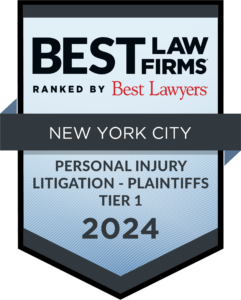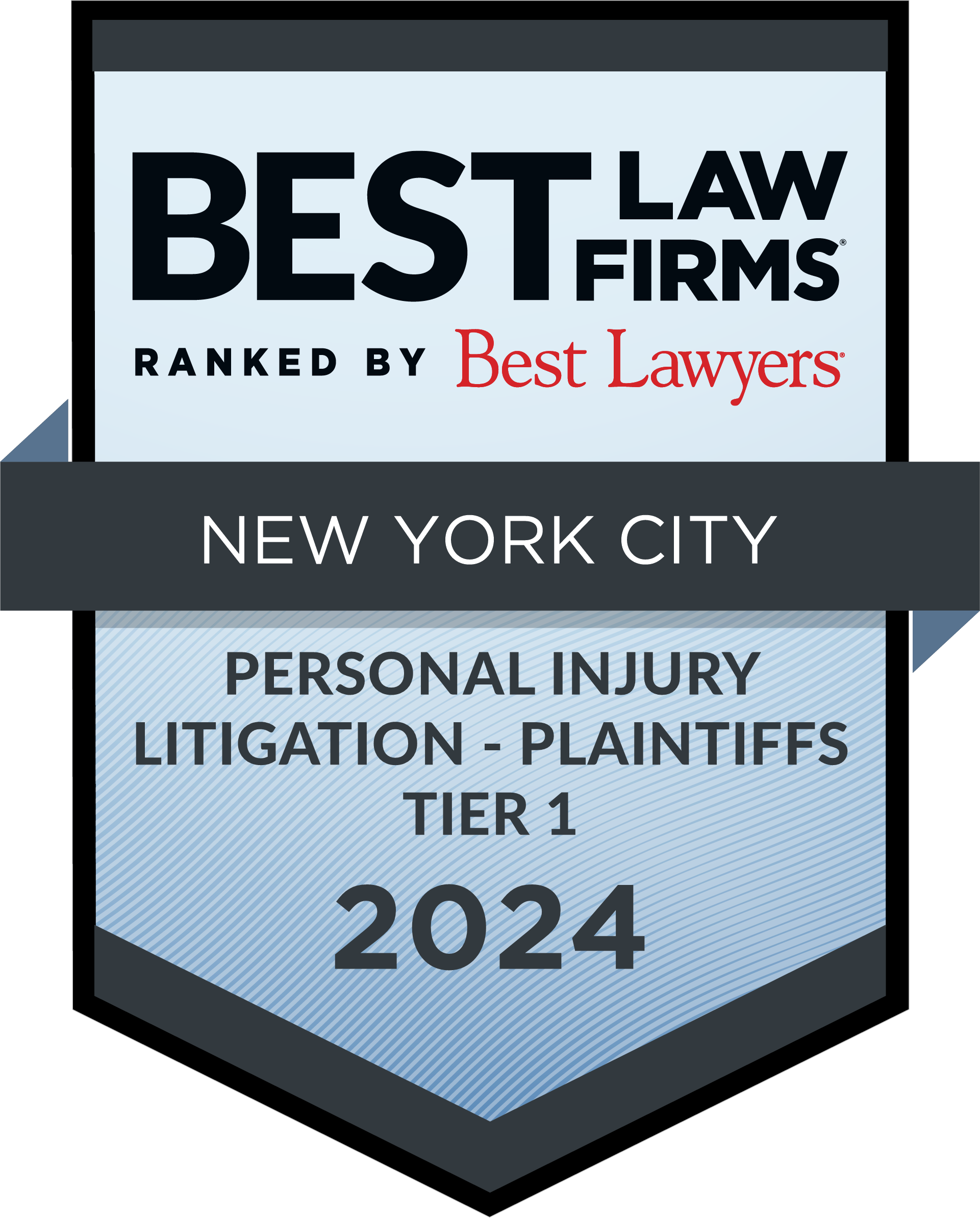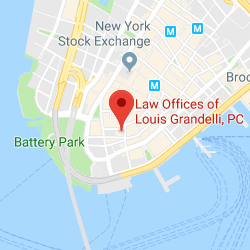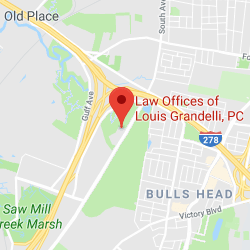
One only needs to be reminded of those classic black-and-white photographs from the 1920’s showing construction workers eating their lunch while perched on a single steel beam hundreds of feet above the bustling streets of New York City to know that working in the construction industry in New York can present some significant elevation-related safety risks for workers.
Recognizing these hazards, New York long ago enacted Labor Law § 240 (1), which was specifically intended to give special and extensive protection to New York construction workers from the gravity-related risks of their assigned work. Among the notable features of this statute is that it imposes “absolute liability” on construction project owners, general contractors and their statutory agents for violations of the statute which cause a worker’s injuries. This means that once the plaintiff has established a violation of section 240 (1) was a proximate cause of the injured worker’s injuries, that worker’s allegedly comparative negligence is not a defense to a defendants’ liability under Labor Law § 240.
In the case law, there are numerous types of allegedly negligent conduct on the part of the injured worker that have been held, as a matter of law, not to constitute a defense to the defendant’s liability under the statute. Below is just a mere sampling of recent examples:
- “A worker’s injury in an area of the work site where the worker was not supposed to be amounts to comparative negligence, which is not a defense to a Labor Law § 240 (1) claim” (Zong Wang Yang v City of New York, 207 AD3d 791, 795 [2d Dept 2022], citing Plaku v 1622 Van Buren LLC, 198 AD3d 431, 432 [1st Dept 2021]; see also Mayorquin v Carriage House Owner’s Corp., 202 AD3d 541, 542 [1st Dept 2022][“Even if it were true that plaintiff was not authorized to work on the canopy, his decision to get on top of it would have amounted to only comparative negligence, which is not a defense to a Labor Law § 240 (1) claim”]).
- “Defendants also failed to raise an issue of fact as to whether the plaintiff was the sole proximate cause of his accident. Defendants contend that the plaintiff chose to use a bathroom further away from his workstation and attempted to cross over the ditch without first inspecting the covering that had replaced the plank before stepping on it. However, these circumstances still demonstrate that the plaintiff’s accident was the result of the absence of a safety device, and raise only an issue as to the plaintiff’s comparative negligence, which is not a defense to a Labor Law § 240(1) claim” (Sotelo v TRM Contracting, LP, 212 AD3d 488 [1st Dept 2023], citing Hewitt v NY 70th St. LLC, 187 AD3d 574, 575 [1st Dept 2020]).
- “Plaintiff established prima facie entitlement to summary judgment on the Labor Law § 240 (1) claim through his testimony that while installing a cover on a sprinkler in a ceiling, he fell to the ground and sustained injury when the unsecured ladder on which he was standing with one foot on the ladder’s top, and the other foot one rung below began to wobble and he lost his equilibrium …Given plaintiff’s undisputed testimony, any alleged misuse by him constitutes at most comparative negligence, which is not a defense to a Labor Law § 240 (1) claim (Hoxhaj v W. 30th HL LLC, 195 AD3d 503, 504 [1st Dept 2021], citing Cuentas v Sephora USA, Inc., 102 AD3d 504, 504 [1st Dept 2013]).
- A plaintiff’s “alleged failure to lock the wheels of the scaffold … would be at most comparative negligence, which is not a defense to a Labor Law § 240 (1) claim” (Ordonez v One City Block, LLC, 191 AD3d 412 [1st Dept 2021], citing Celaj v Cornell, 144 AD3d 590 [1st Dept 2016][plaintiff’s “alleged ‘failure to use the locking wheel devices and his movement of the scaffold while standing on it’ were at most comparative negligence, which is not a defense to a Labor Law § 240 (1) claim”], also citing Vail v 1333 Broadway Assoc., L.L.C., 105 AD3d 636, 637 [1st Dept 2013]).
- “Furthermore, even if it could be established that plaintiff did not lock all of the pins in place before ascending the scaffold, this ‘would have amounted to only comparative negligence, which is not a defense to a Labor Law § 240(1) claim’” (Pirozzo v Laight Street Fee Owner LLC, 209 AD3d 596 [1st Dept 2022]
- “Given that the scaffold was inadequate in the first instance [because it lacked guardrails], any failure by plaintiff to hydrate himself could not be the sole proximate cause of his injuries” (see Vail v 1333 Broadway Assoc., L.L.C., 105 AD3d 636, 637 [1st Dept 2013], citing Blake v Neighborhood Hous. Servs. of N.Y. City, 1 NY3d 280, 290 [2003]; Lajqi v New York City Tr. Auth., 23 AD3d 159 [1st Dept 2005]).
- Defendants’ contentions would amount to, at most, comparative negligence, where they argued that the sole proximate cause of plaintiff’s incident was his “decision to use an A-frame ladder in the closed position” or his purported failure to use an allegedly unavailable taller ladder (Morales v 2400 Ryer Avenue Realty, LLC, 190 AD3d 647 [1st Dept 2021]).
- “[A]ny failure by plaintiff to refrain from standing on the top steps of the ladder amounts to no more than comparative negligence, which is not a defense under Labor Law § 240 (1) (see Green v Evergreen Family Ltd. Partnership, 210 AD3d 1496 [4th Dept 2022], citing Fronce v Port Byron Tel. Co., Inc., 134 AD3d 1405, 1407 [4th Dept 2015]).
- A plaintiff’s failure to secure a ladder or to ensure that it was properly set up, when the ladder had already been set up by another worker by the time plaintiff arrived at the site, is, at most, comparative negligence (see Daly v Metropolitan Transp. Auth., 206 AD3d 467 [1st Dept 2022]).
- “Disguised claims of comparative negligence do not make out a sole proximate cause defense on a plaintiff’s motion for partial summary judgment on a section 240(1) claim … A worker cannot be faulted for failing to use safety devices or instrumentalities that cannot be effectively used at a worksite” (Vitucci v Durst Pyramid LLC, 205 AD3d 441 [1st Dept 2022], citing Batista v Manhattanville Coll., 28 NY3d 1093 [2016]; also citing Saavedra v 89 Park Ave. LLC, 143 AD3d 615 [1st Dept 2016][the plaintiff was not the sole proximate cause of his accident where the presence of construction debris prevented him from opening an 8-foot ladder]; Keenan v Simon Prop. Group, Inc., 106 AD3d 586 [1st Dept 2013][the plaintiff was not the sole proximate cause of his accident where a ladder was inadequate for the nature of the work and the associated gravity-related risks]).
- “Adaptions in work that a plaintiff is forced to make at a work site cannot be used as a defense to a section 240 (1) claim where the plaintiff’s actions are a consequence of the defendant’s failure to provide proper safety devices in the first instance” (Vitucci v Durst Pyramid LLC, 205 AD3d 441 [1st Dept 2022], citing Nieto v CLDN NY LLC, 170 AD3d 431 [1st Dept 2019]).
- “Defendants failed to establish as a matter of law that plaintiff’s alleged conduct, such as tripping and falling, or leaning against a wooden barricade, was the sole proximate cause of his accident, rather than comparative negligence, which is not a defense to a Labor Law § 240(1) claim” (Rooney v D.P. Consulting Corp., 204 AD3d 428 [1st Dept 2022], citing Diming Wu v 34 17th St. Project LLC, 200 AD3d 508, 509 [1st Dept 2021]).
- A plaintiff is not under an affirmative obligation to refuse a supervisor’s or an employer’s instructions and refuse to perform work unless appropriate safety devices or a safer method for his/her work is provided, as the Courts have long recognized that imposing such a requirement on an injured worker “overlooks the realities of construction work” and the power dynamics of a worksite (Gutierrez v 451 Lexington Realty LLC, 156 AD3d 418, 419 [1st Dept 2017]).
- “[A]n instruction by an employer or owner to avoid using unsafe equipment or engaging in unsafe practices is not a ‘safety device’ in the sense that plaintiff’s failure to comply with the instruction is equivalent to refusing to use available, safe and appropriate equipment” (Zong Wang Yang v City of New York, 207 AD3d 791, 795 [2d Dept 2022][“the City defendants and A-Tech failed to establish, as a matter of law, that the injured plaintiff’s failure to heed the instructions of the A-Tech foreman and sub-foreman not to enter the shaft constituted the sole proximate cause of his injuries because ‘an instruction …”], quoting Gordon v Eastern Ry. Supply, 82 NY2d 555, 563 [1993], quoting Stolt v General Foods Corp., 81 NY2d 918, 920 [1993]).
These and other cases make it clear that an injured worker does not have to be perfect to recover under Labor Law § 240 (1) if the evidence shows that the defendants violated the statute, and that such violation was at least a cause of the plaintiff’s subject incident and resulting injuries.
While Labor Law § 240 (1) helps to even the playing field when it comes to litigating incidents arising out of elevation-related risks, it does not apply to all cases, and even when it does apply, each case will ultimately turn on its own particular facts. Thus, if you or someone you know has been injured in a construction-related incident, contact the experienced construction injury attorneys at Grandelli & Eskenasi today to learn more about your options.


















